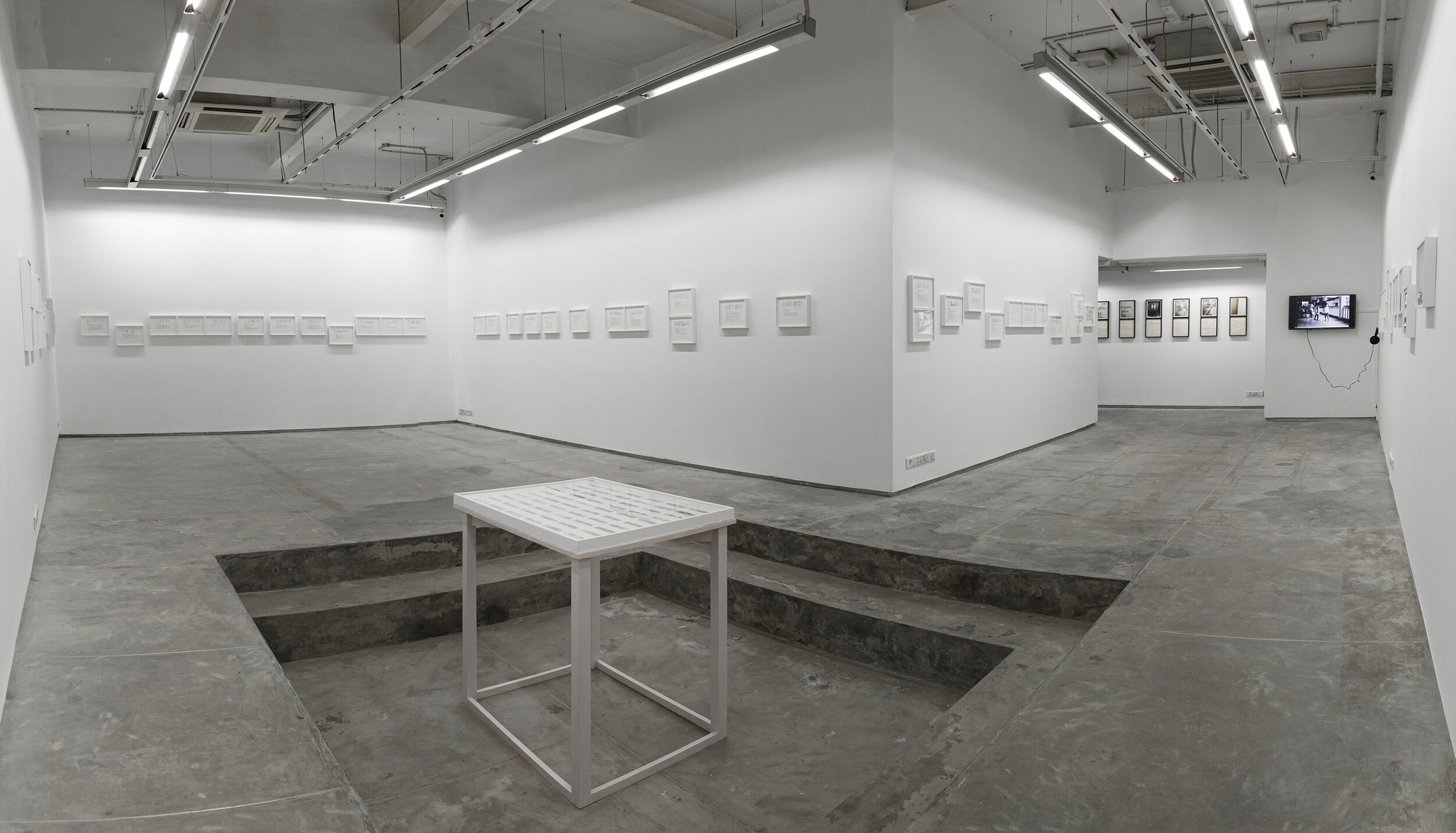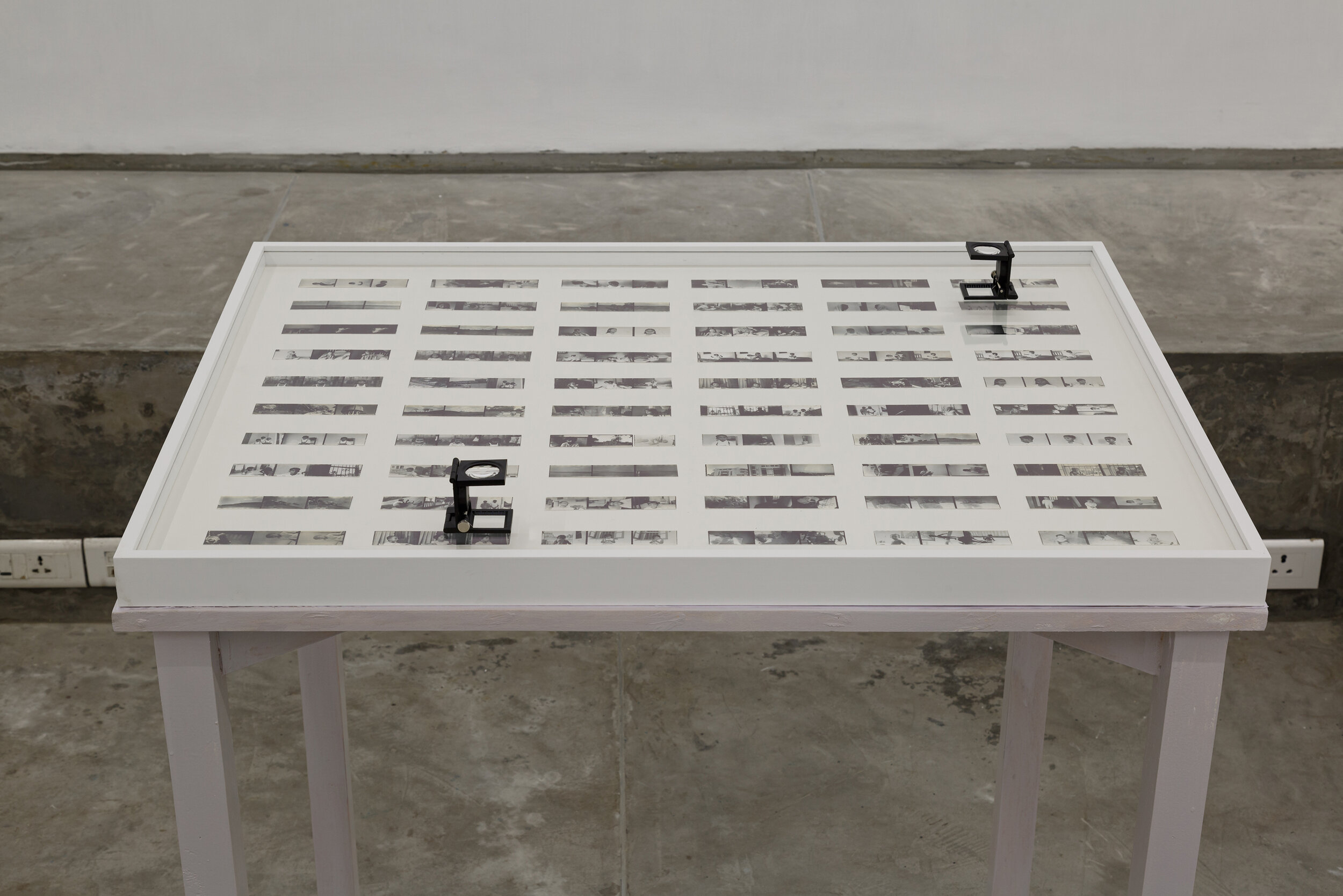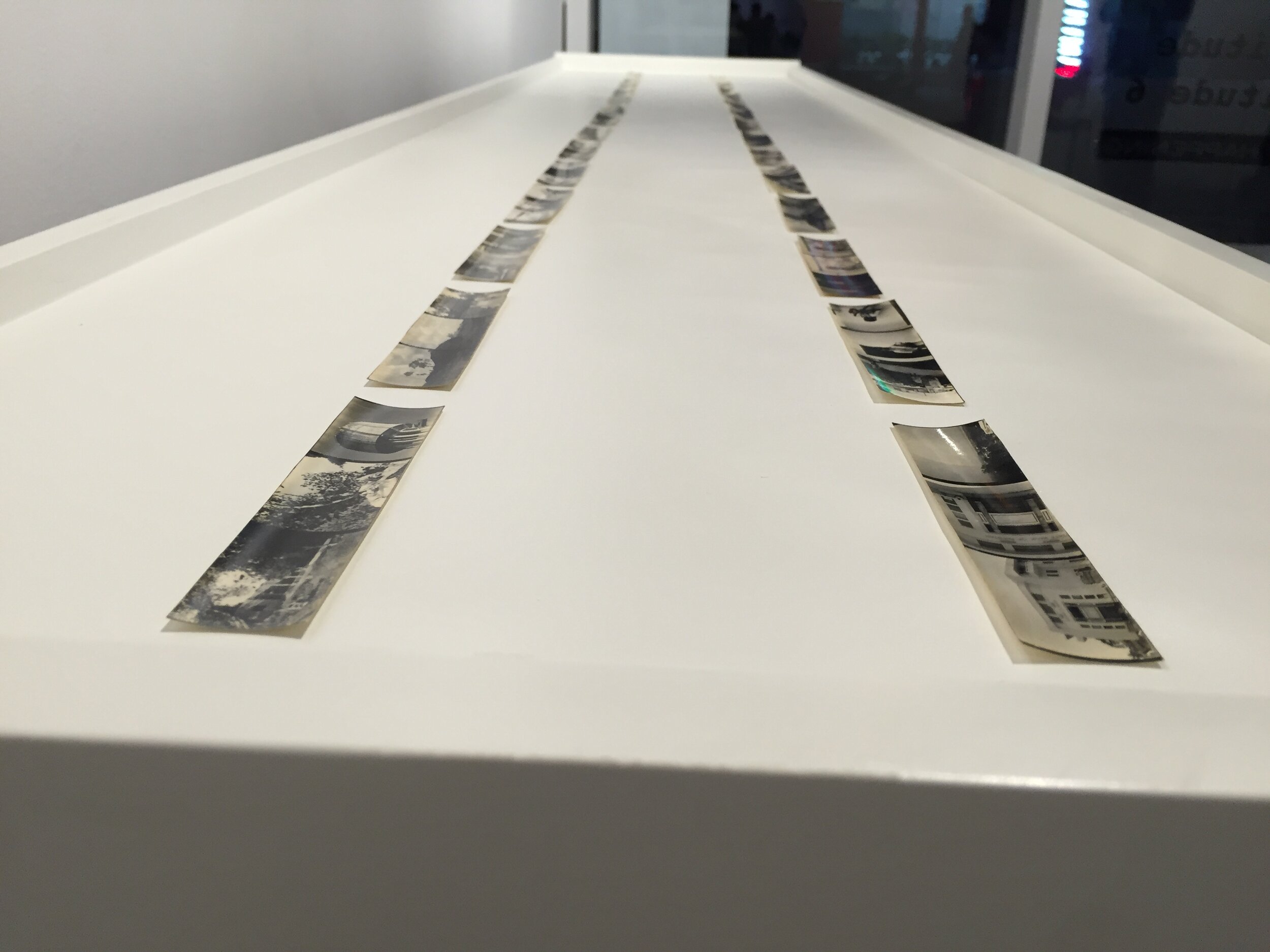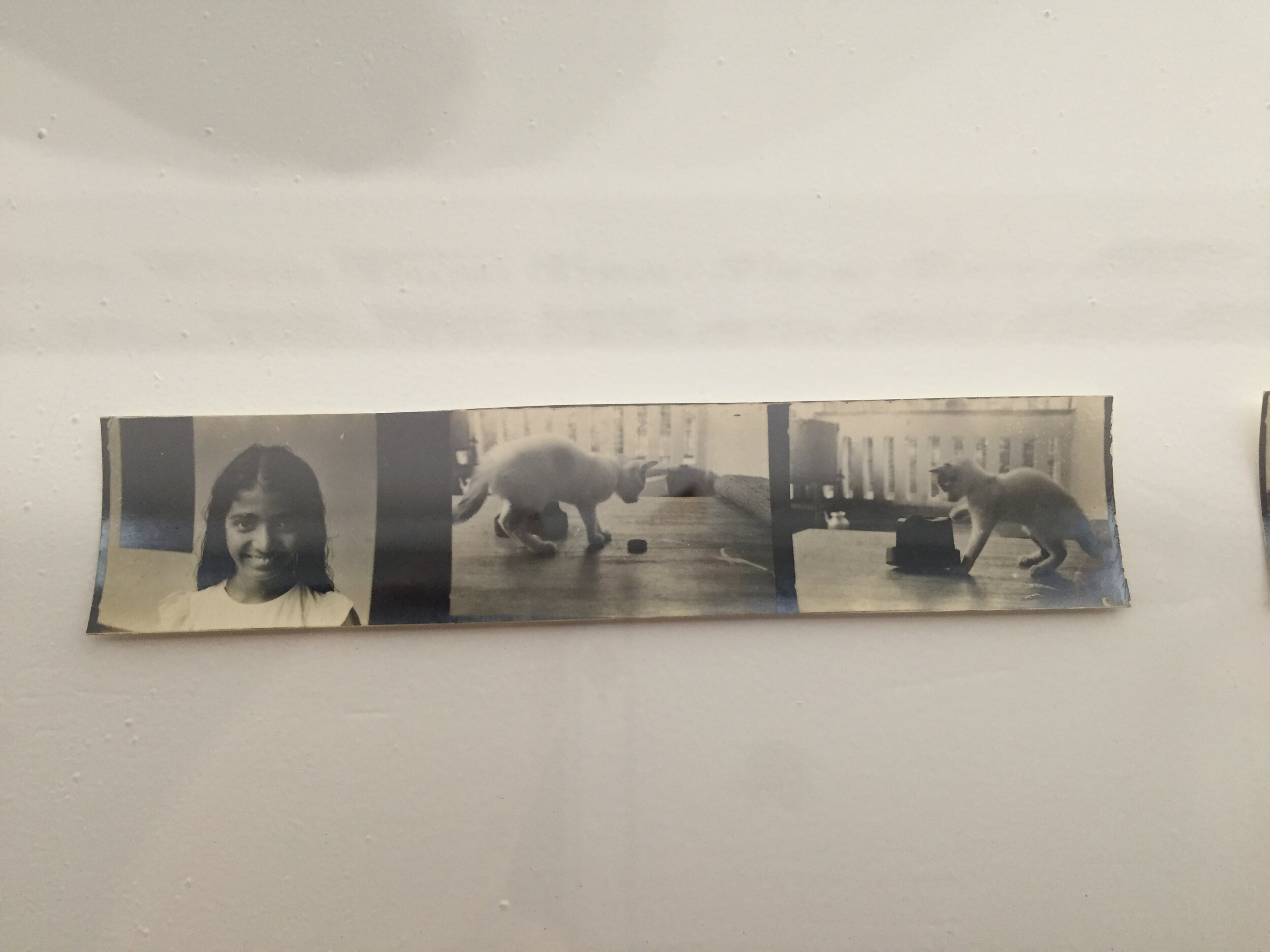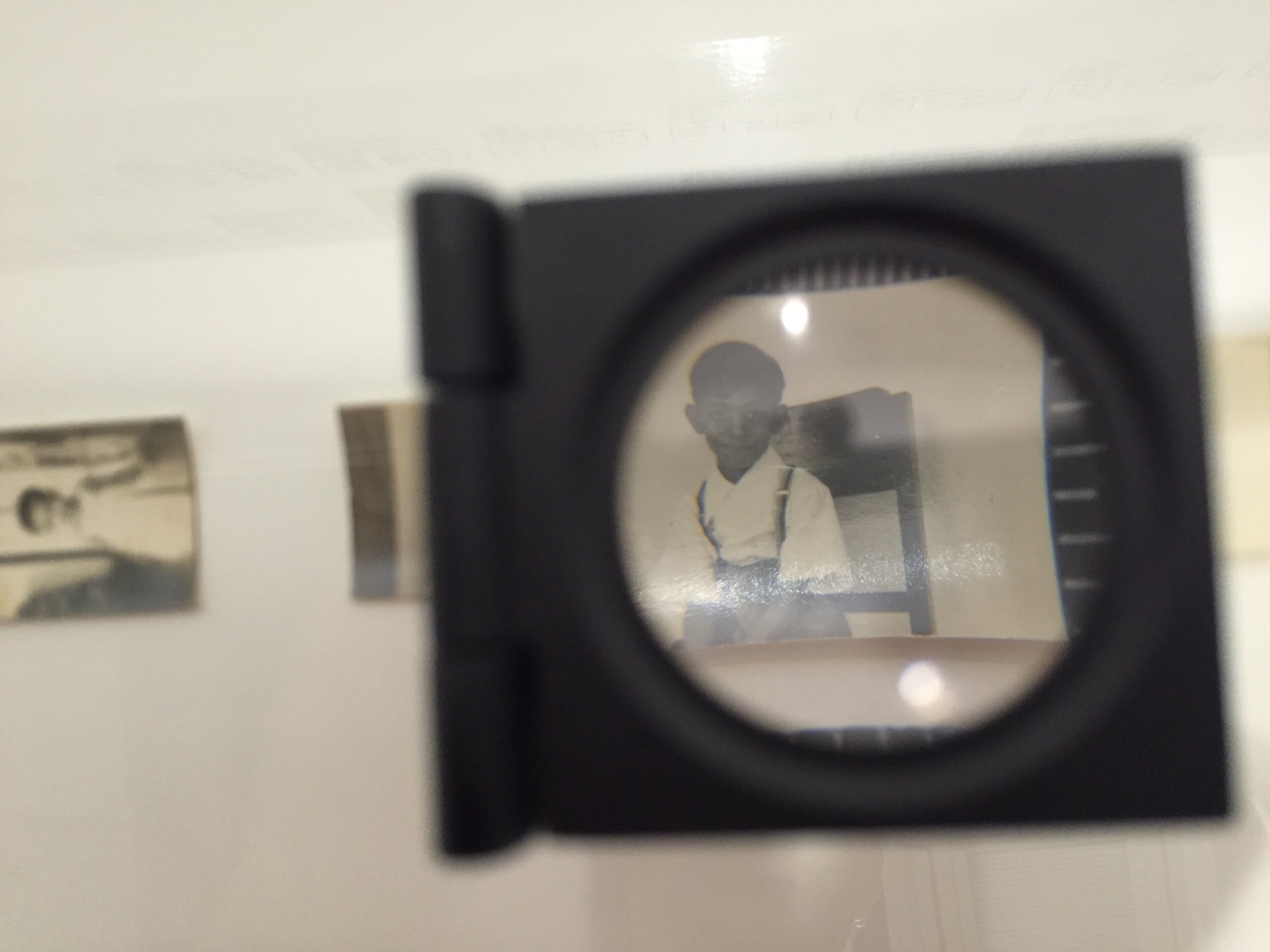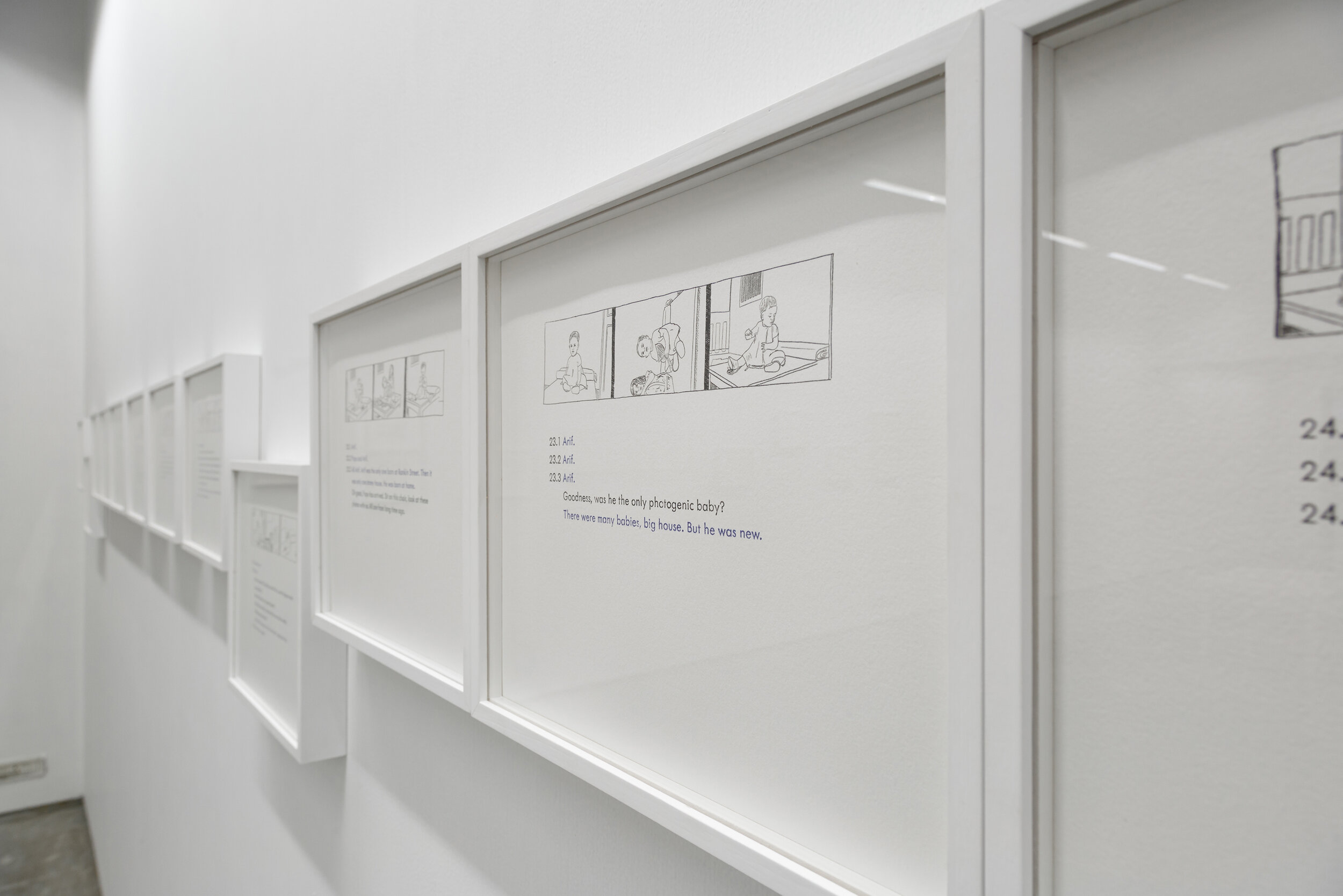BAKSHO ROHOSHOYO [2019]
In Baksho Rohoshyo (Chobi Tumi Kar?), Naeem returns to photographs his father took in the 1950s, documenting what family members can remember now about snapshots of a house, cousins, and scenery. The title comes from Satyajit Ray’s Feluda detective novel, but the box here is a smaller one, with tiny photo strips.
This project first appeared at Longitude Latitude 6 in Dhaka, in Bengali, and appears here in English. Naeem’s father was a surgeon in pre-1971 Pakistan, and post-1971 Bangladesh. He was also an obsessive photographer from the 1950s onward, very little of which survived the impact of weather and neglect. In Rankin Street, 1953 ( 2013), Naeem made sculptures, blueprints, and a video
responding to these photographs,using his own recall of conversations with his father.
For Baksho Rohoshyo, he sat with his father, Mohammad Abdul Mohaiemen (b 1935, Mymensingh, East Bengal), and two of his sisters Suraiya Begum (b 1937, Diamond Harbor, West Bengal; d 2019, New York, USA) and Sadia Afroze Ali (b 1949, Pabna, East Bengal). In the transcribed conversations reproduced here, the multi-colored dialogue is between Naeem (black), his father (blue), and aunts Suraiya (green) and Sadia (red). The length of the answers gives a sense of who remembers what, and which details shine through. For this iteration, the text has been translated into English, and while this reaches a different audience, Bengali speakers know that something of the original meaning is lost. Sometimes, the transcripts have names–Bablu Da, Mejo Bua, Bhai Sab– of interest only to family members. At other times, small fragments of national history appear, marked by two partitions–1947 partition of Bengal and the 1971 liberation of Bangladesh. Small glimmers of larger arcs appear– neglected Hindu temples, ‘Transfer of Property’ between India and Pakistan, the appearance of Urdu, and the decline of the forms of address (‘didi’, ‘da’) misidentified as “Hindu Bangla” and their replacement with “more Muslim” forms (‘saab’, ‘bhai’, ‘apa’). Along the way, the Christian-Hindu-Muslim team that invented fingerprints as policing technology. Small storms went over this family, as they did over an entire subcontinent. These stories are the last footprints of a once ekannoborti family now scattered by economics and migration.
